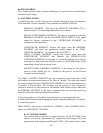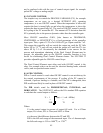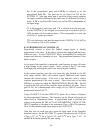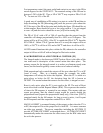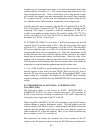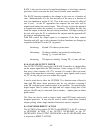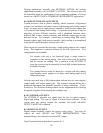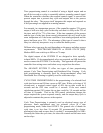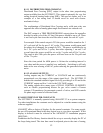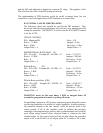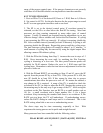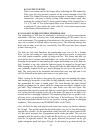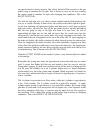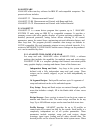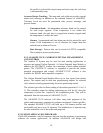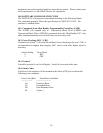52
8.1.11 DISTRIBUTED ZERO CROSSING
Distributed Zero Crossing [DZC] output is the other time proportioning
output available from the SYSTEM 32. This output is primarily for very fast
acting electrical heating loads using SSR's. The open air heater coil is an
example of a fast acting load. It should never be used with electro-
mechanical relays.
The combination of Distributed Zero Crossing and a solid state relay can
approach the effect of analog phase angle fired control at a reduced cost.
The DZC output is a TIME PROPORTIONING output where the controller
decides for each cycle of the AC line if the power should be on or off. There
is no fixed cycle time since the on/off decision is made for each AC cycle.
For example if the control output is 25% the power would be turned on for 1
AC cycle and off for the next 3 AC cycles. This pattern would repeat until
the output level changed, for example to 28%. The power would then be on
for 1 AC cycle and off for 3 cycles, then after repeating 1 on and 3 off
several times the power would be set on for 2 cycles and off for 2 cycles.
The result is after 100 cycles the power will have been on for 28 cycles and
off for 72 cycles.
Since the time period for 60Hz power is 16.6ms the switching interval is
very short and the power is applied very uniformly. Switching is still only
done at the zero crossing of the AC power reducing the generated electrical
noise.
8.1.12 ANALOG OUTPUTS
Analog outputs may be CURRENT or VOLTAGE and are continuously
proportional over the range of the output signal level. The SYSTEM 32
matches the standard industrial signal levels by providing 4 to 20 ma for the
CURRENT output and 0 to 5 vdc for the VOLTAGE output.
The analog signals drive many types of FINAL CONTROL ELEMENTS
such as electric proportioning motors for gas valve control of burner
systems, I/P transducers for pneumatic control of valves, and SCR controls
for phase angle control of electrical loads.
8.2 ADJUSTMENT OF PID CONSTANTS
The SYSTEM 32 is normally operated using ANASOFT-32 in a system computer.
For other installations the constants can be adjusted in a similar manner using the
software supplied.
ANASOFT offers a choice of displays for the control constants. For many people,
the use of Proportional Band is the most logical way to view these constants. If this
display is desired it must be selected in the ANASOFT-32 installation program
QINSTALL.
In addition the Plot History function should be set up to correctly display the PV of
the loops being tuned. The time base must be adjusted prior to the start of tuning,



